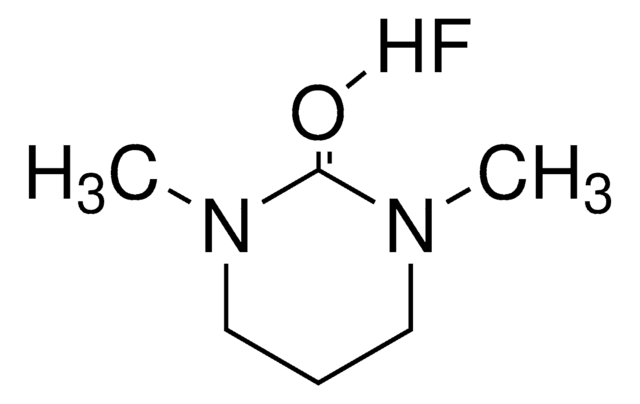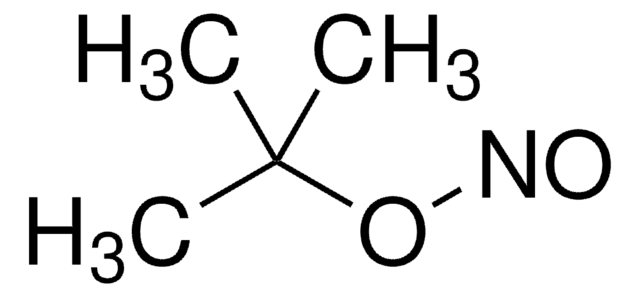Key Documents
184225
Hydrogen fluoride pyridine
pyridine ~30 %, hydrogen fluoride ~70 %
Synonim(y):
HF-Pyridine, Olah′s reagent, PPHF, Poly(pyridine fluoride), Pyridine hydrofluoride, Pyridinium poly(hydrogen fluoride), Pyridinium polybifluoride
About This Item
Polecane produkty
Postać
liquid
Poziom jakości
skład
hydrogen fluoride, ~70%
pyridine, ~30%
gęstość
1.1 g/mL at 20 °C (lit.)
temp. przechowywania
−20°C
ciąg SMILES
F[H].c1ccncc1
InChI
1S/C5H5N.FH/c1-2-4-6-5-3-1;/h1-5H;1H
Klucz InChI
GRJJQCWNZGRKAU-UHFFFAOYSA-N
Szukasz podobnych produktów? Odwiedź Przewodnik dotyczący porównywania produktów
Powiązane kategorie
Opis ogólny
Zastosowanie
Used together with hypervalent iodine(III) reagents for ipso-fluorination of para-substituted phenols providing cyclohexadienones. Employed with Selectfluor™ (Catalog No. 439479) for geminal fluorination of 2,2-diaryl-1,3-dithiolanes.
- Epimers of shikimic acid with the features of fucosylated glycans via zinc-mediated reductive ring opening followed by a Barbier reaction
- Vaccinia H1-related (VHR) phosphatase inhibitor with a nonacidic phosphate-mimicking core structure
- Candidates for nucleic acid drugs
- ω-substituted gem-difluoroalkanes by oxidative desulfurization-difluorination
Reagent for:
- Halofluorination reactions
Informacje prawne
Hasło ostrzegawcze
Danger
Zwroty wskazujące rodzaj zagrożenia
Zwroty wskazujące środki ostrożności
Klasyfikacja zagrożeń
Acute Tox. 1 Dermal - Acute Tox. 2 Inhalation - Acute Tox. 2 Oral - Eye Dam. 1 - Skin Corr. 1A
Kod klasy składowania
6.1A - Combustible acute toxic Cat. 1 and 2 / very toxic hazardous materials
Klasa zagrożenia wodnego (WGK)
WGK 2
Temperatura zapłonu (°F)
Not applicable
Temperatura zapłonu (°C)
Not applicable
Środki ochrony indywidualnej
Faceshields, Gloves, Goggles, type ABEK (EN14387) respirator filter
Wybierz jedną z najnowszych wersji:
Masz już ten produkt?
Dokumenty związane z niedawno zakupionymi produktami zostały zamieszczone w Bibliotece dokumentów.
Klienci oglądali również te produkty
Nasz zespół naukowców ma doświadczenie we wszystkich obszarach badań, w tym w naukach przyrodniczych, materiałoznawstwie, syntezie chemicznej, chromatografii, analityce i wielu innych dziedzinach.
Skontaktuj się z zespołem ds. pomocy technicznej








![1-Chloromethyl-4-fluoro-1,4-diazoniabicyclo[2.2.2]octane bis(tetrafluoroborate) >95% in F+ active](/deepweb/assets/sigmaaldrich/product/structures/206/487/53d52ee5-ef71-4e9a-9bc8-938b68b98d5d/640/53d52ee5-ef71-4e9a-9bc8-938b68b98d5d.png)


